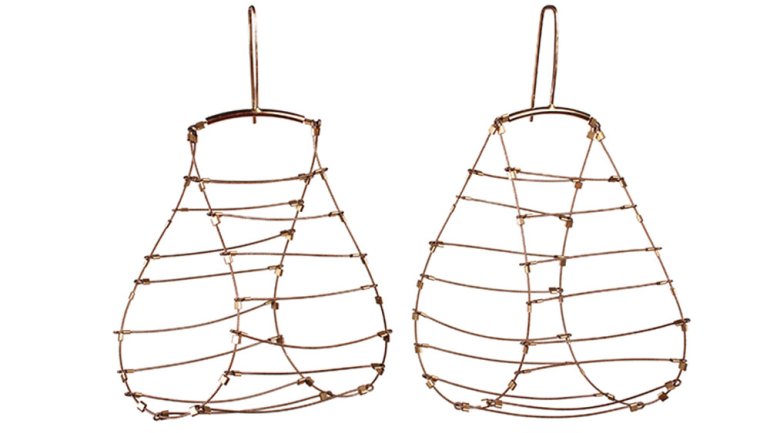Change Makers
Change Makers
Meghan Patrice Riley was stunned when she learned she had won the Society for Contemporary Craft’s prestigious Raphael Founder’s Prize.
From the outside, you might think the 31-year-old, New York-based metalsmith would be used to success: Her work is in galleries and stores, including Santa Monica’s Gallery of Functional Art and the Seattle Art Museum gift shop. In 2011, her fall collection showed in New York’s Fashion Week, and she was a semi-finalist for the 2011 Ecco Domani Fashion Foundation award.
But the Raphael Prize – an award established in 1997 to honor the late SCC founder Elizabeth Raphael – is her first true recognition as an artist, Riley says. “To be accepted in this way by my peers and by the Society is rewarding and really an acknowledgment of what I need to be doing.”
Riley studied economics and French, and never imagined she would pursue a career in craft when she began working as a community development coordinator in San Francisco after college. But off-hours experimentation with jewelry making at the Bay Area arts organization Crucible and a rigorous apprenticeship with jeweler David Thorp led her to open her eponymous fine jewelry company in 2008.
Her award-winning necklace Interstitial, made of nylon-coated steel wire and 14k gold fill, is on view – along with 32 other finalists’ work – in the prize’s juried biennial, “Transformation 8: Contemporary Works in Small Metals,” at SCC’s Pittsburgh headquarters.
Interstitial “relates to the process by which we transform,” Riley explains. She focused on the time between perceived moments of transformation, constructing the necklace out of seven Möbius strips oriented in a counter-clockwise circle, as indicated by an open arrow shape on the right side. The necklace’s representation of transformation, however,nis also physical. Lying flat innthe display case, the wire hasnan almost two-dimensional appearance. On the body, it takes on volume, becoming fully three-dimensional. The piece is “a kind of line drawing in space that floats on the body,” observes juror Bruce Pepich, executive director of the Racine Art Museum in Wisconsin.
Natalya Pinchuk, an internationally renowned jeweler, joined Pepich in judging the prize. The other jurors were SCC exhibitions director Kate Lydon and the founder’s daughters: metalsmith and storyteller Catherine Raphael; London-based metalsmith Alexandra Raphael; and filmmaker Margaret Raphael, who passed away in December after selecting the initial round of finalists, and to whom this year’s small metals exhibition is dedicated. Each year, the prize has focused on a specific medium, including wood, ceramics, found materials, and glass. Winners, such as furniture designer-maker Jim Rose and glass artist Mark Zirpel, consistently have pioneered new methods of expression, pushing the boundaries of creative practices.
This year, a rare second prize was awarded to Kyoto-born Mari Ishikawa for her sterling silver and Japanese kozo paper work, Parallel World. Although Ishikawa has been a resident of Munich for nearly 20 years, she remains influenced by Japanese ritual and the poetry of 11th-century courtier and diarist Sei Shonagon. Considering the transformative power of the émigré experience, the title of the intricate, shell-like Parallel World suggests a personal connection to the show’s theme.
One of two honorable mentions went to Robert Ebendorf for his striking found-object assemblage, King of the Road, which features a flattened Coke can as nimbus to a leering, gold-tone skull crowned by faux rubies. The other honorable mention went to emerging artist Daniel DiCaprio for his lustrous ebony and silver-speckled Colony Necklace, inspired by plant anatomy and evolutionary transformations. Almost all of the works were created in 2011; some, however, such as Diane Falkenhagen’s exquisite, rib-vaulted Gothic Revival Brooch (The Sublime and the Beautiful), are as recent as this year.
While some works’ connection to the show’s theme is not immediately evident, what is clear is that each represents advances in metal’s expressive capacity and cross-media synergies – and it’s safe to say that the metalworking field, small and large, cannot help but be transformed by them.
Already catalyzed are this year’s 33 honored artists. This kind of acknowledgment, Riley says, “helps me to keep making more, to keep experimenting.”
“Transformation 8: Contemporary Works in Small Metals” is on view at Pittsburgh’s Society for Contemporary Craft through June 30. Savannah Schroll Guz is an art critic for Pittsburgh City Paper, a monthly review columnist for Library Journal, and the author of two collections of short fiction.




